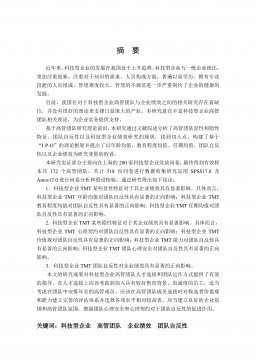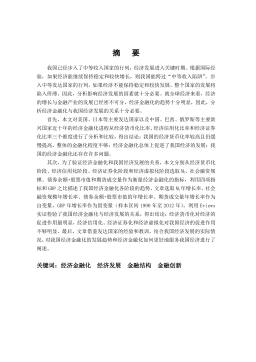微细通道过冷流动沸腾换热特性研究
VIP免费
摘 要
现代科学技术的迅速发展、工艺制造水平的提高和生产的实际需要,为微小
尺度换热研究开辟了新的领域。微通道内的流体流动和传热现象成为国际电子学
界和传热学界的热点问题。但阅读现有文献会发现,对于微细通道内流动和沸腾
换热机理的研究还相当有限,而且没有达到共识。所以,对于微细通道内流动和
沸腾换热特性的研究还有待进一步的深入和细化。本文对微细通道内流动和换热
特性进行了理论研究和实验研究,主要内容包括:
(1)微通道内沸腾起始点(ONB)的研究。实验测定通道内径分别为 0.867mm,
1.347mm 和1.623mm 的圆管内,去离子水分别在入口温度为 30℃,50℃,70℃时
不同质量流率工况下的过冷沸腾起始点,并将实验得到的 ONB 处对应的热流密度
和壁面过热度关系与传统预测关联式和基于微通道建立的 ONB 关联式进行比较。
基于已有常规通道和微通道建立的关联式不能很好的预测本实验值。根据实验数
据,拟合后得到了适用于微通道的沸腾起始点关联式。
(2)内径为 0.867mm,1.347mm 和1.623mm 的通道内发生不稳定起始点的趋
势相同,在微型泵转速相同时,随着质量流速的改变,不稳定起始点处的压降随
热流密度值的增加依次增加。选取预测不稳定起始点的模型进行分析,均偏大,
不能很准确的预测流动沸腾不稳定起始点处的热流密度。
(3)分别对不稳定起始点处对应饱和热流密度与不稳定起始点处热流密度的
关系、不稳定起始点处 St 数与 Pe 数的关系、以及实验相关参数建立三种模型,能
较好的预测 OFI 点。
(4)通过对比本实验所得 ONB 点及 OFI 点数据,可看出两者十分接近。这
是由于微细通道内流动沸腾过程中气泡产生后迅速占据通道径向空间并向上下游
扩展,导致 ONB 点、OSV 点和 OFI 点十分接近,因此无法清晰区别。
(5)管道内流动沸腾有核态沸腾和强制对流两种换热机制控制。通过分析热
流密度、质量流率对换热系数的影响,换热系数随着质量流率的增加而增大,热
流密度对换热系数产生影响甚小,可判定过冷段流动沸腾换热的主导的换热机制
为强制对流换热。
(6)对影响过冷流动沸腾换热影响因素进行分析,可以看出,在通道尺寸较
小(内径 0.867mm)的通道内,过冷段流动沸腾局部换热系数随各变量的变化显
著,而在尺寸较大(内径分别为 1.347mm 和1.623mm)的通道内过冷段流动沸腾
局部换热系数虽然比单相流动时有所提高,但提高的很小。考虑雷诺数 Re,沸腾
数Bo 及限制因子 Nconf,建立关联式,所得结果与实验结果吻合很好。
关键词:微细通道 沸腾起始点 不稳定起始点 过冷沸腾换热
ABSTRACT
With the development of modern science, manufacture process and the actual
needs of the production, a new area for small and micro scale heat transfer was opened.
Fluid flow and heat transfer in micro-channel became the hot topic in international
electronic and heat transfer academia. But from the existing literature we can find, it is
still quite limited for flow and boiling heat transfer mechanism within the
micro-channels, and did not reach a consensus. Therefore, further study and research the
characteristics of flow and boiling heat transfer in micro-channel is Indispensable. This
paper made a theoretical and experimental research for the flow and heat transfer
characteristics in micro-channel, the main contents include:
(1) Onset of nucleate boiling (ONB) research in micro-channel. The experiment
research the ONB point in the diameter of 0.867mm, 1.347mm and 1.623mm, deionized
water inlet 30°C, 50°C, 70°C and different mass flow rate conditions. compare the
relationship of experimental heat flux and wall superheat in ONB, and with traditional
forecasting relational of ONB in micro-channel. As correlations neither conventional
channel nor micro-channel of ONB cannot predict the experimental values, so according
to the experimental data, establish a boiling incipience correlation applicable to micro
channel.
(2) The onset of instability occurs in channel 0.867mm, 1.347mm and 1.623mm
have the same trend, in the same rotational speed of the micro-pump, with a change of
the mass flow rate, pressure drop in OFI increase with the heat flux density increase.
Predict OFI correlations are large to predict experiments values and cannot accurately
predict the flow boiling heat flux of onset of instability.
(3) Establish correlations by the relationship of saturated heat flux and heat flux in
OFI, the relationship between the St number and Pe number in OFI, as well as
experimental parameters, all competent better to forecast OFI point.
(4) By the date of ONB point and OFI point in this experiment, it can be seen that
the two point are very close. Bubbles generated in micro-channel flow boiling process
quickly occupy the channel radial space and extension to the upstream and downstream,
resulting ONB point, OSV point and OFI point very close to each other, therefore it’s
impossible to make a clear distinction.
(5) Flow boiling in pipe derived into two heat exchange control mechanism,
nucleate boiling and forced convection. By analyzing the influence of heat flux, mass
flow rate to the heat transfer coefficient, heat transfer coefficient increase with mass
flow increases, the impact of heat flux on the heat transfer coefficient is very small, so
we can determined the main heat exchange mechanism of flow boiling heat transfer in
subcooled segment is forced convection heat transfer.
(6) By analysis the affecting factors of subcooled flow boiling heat transfer, it can
be seen that in the smaller (diameter 0.867mm) channel, subcooled flow boiling heat
transfer coefficient have significant changes with the variables factors. In large
(1.347mm and 1.623mm) channel subcooled flow boiling heat transfer coefficient
improved to single-phase flow relatively but small. Consider the Reynolds number Re,
boiling number Bo and confinement number Nconf, establish correlation, results are in
good agreement with the experimental results.
Key Words :Micro-channel, boiling incipience, onset of instability,
subcooled boiling heat transfer
目 录
中文摘要
ABSTRACT
第一章 绪 论 ..................................................... 1
1.1 微细通道的概念 ............................................. 1
1.2 课题的来源及意义 ........................................... 3
1.3 国内外研究现状 ............................................. 5
1.3.1 沸腾起始点 ONB ......................................... 5
1.3.2 不稳定起始点 OFI ....................................... 7
1.3.3 过冷沸腾段换热 ........................................ 8
1.4 本文研究内容 .............................................. 11
第二章 微细通道内沸腾换热实验装置 ............................... 12
2.1 实验系统 ................................................. 12
2.1.1 实验目的和内容 ....................................... 12
2.1.2 实验台 ............................................... 12
2.1.3 实验段 ............................................... 12
2.2 实验测量参数及相关仪表 ................................... 16
2.2.1 测量参数 ............................................. 16
2.2.2 测量用相关仪表及方法 ................................. 16
2.3 实验步骤 .................................................. 18
2.4 系统热平衡计算 ............................................ 18
2.5 实验数据处理 .............................................. 19
2.6 不确定度分析 .............................................. 20
2.7 本章小结 .................................................. 21
第三章 核态沸腾起始点的研究 ..................................... 22
3.1 流动沸腾核化机理 ......................................... 22
3.2 沸腾起始点的确定 ......................................... 23
3.3 数据处理 ................................................. 24
3.4 实验结果与分析 ........................................... 26
3.5 实验影响因素分析 ......................................... 29
3.5.1 入口过冷度对沸腾起始点处热流密度的影响 ................ 29
3.5.2 质量流速对沸腾起始点处热流密度的影响 ................. 30
3.5.3 干度对沸腾起始点处热流密度的影响 ..................... 31
3.5.4 压降对沸腾起始点处热流密度的影响 ..................... 31
3.6 沸腾起始点计算方法 ....................................... 32
3.7 实验关联式 ............................................... 35
3.8 本章小结 ................................................. 39
第四章 不稳定起始点的研究 ....................................... 40
4.1 不稳定起始点简介 ......................................... 40
4.2 相关数据处理 ............................................. 41
4.3 不稳定起始点的确定 ....................................... 41
4.4 不稳定起始点的影响因素分析 ............................... 42
4.4.1 入口温度对不稳定起始点的影响 .......................... 42
4.4.2 质量流速对不稳定起始点的影响 .......................... 42
4.4.3 压降对不稳定起始点的影响 .............................. 43
4.5 流动沸腾不稳定起始点计算模型分析 ......................... 44
4.5.1 OFI 模型 ............................................... 44
4.5.2 OSV 模型 ............................................... 46
4.5.3 各预测关联式适用性比较 ................................ 47
4.6 实验关联式 ............................................... 48
4.6.1 直接利用实验相关参数建立关联式 ........................ 48
4.6.2 利用 St 数和 Pe 数建立经验关系式 ........................ 48
4.6.3 利用 qOFI 与qsat 建立经验关系式 ............................ 48
4.7 OFI 点与 ONB 点的比较 ....................................... 49
4.8 本章小结 ................................................. 50
第五章 过冷沸腾流动换热特性研究 ................................. 51
5.1 过冷沸腾流动换热实验数据处理 ............................... 51
5.2 微通道内流动沸腾换热机制 ................................... 52
5.3 微通道内的过冷流动沸腾换热实验结果分析 ..................... 52
5.3.1 局部换热系数与过冷度和压降的关系 ....................... 53
5.3.2 局部换热系数与通道尺寸的关系 ........................... 55
5.3.3 局部换热系数与质量流速的关系 ........................... 55
5.3.4 局部换热系数与入口温度的关系 ........................... 58
5.4 公式拟合 ................................................... 59
5.5 本章小结 ................................................... 60
第六章 总结 ..................................................... 61
6.1 研究工作总结 ............................................. 61
6.2 下一步工作展望 ........................................... 62
符号说明 ........................................................ 63
参考文献 ........................................................ 65
在读期间公开发表的论文和承担科研项目及取得成果 .................. 70
致谢 ............................................................ 71
第一章 绪论
1
第一章 绪论
1.1 微细通道的概念
人类所能感知的自然界中各种物体的空间尺寸,小至电子、原子、分子,大至
宇宙,涵盖了从纳米到光年这样一个广阔的范围。如图 1-1 所示为 1999 年Mohamed
Gad-el-Hak[1]提出的宏观自然界物体空间尺寸的划分图谱。以往研究者(对于流体力
学和传热学)研究的大多是人类所能触及的宏观尺寸对象,主要是集中在 10-9-102m
范围内的设备,近几十年的发展使人们对于 10-2-102m范围内的典型人造设备的研
究已相对成熟,但对于在 10-6-10-4m范围内的流动换热设备研究的还相对缓慢。
图1-1 宏观自然界物体空间尺寸划分图谱
由于通道尺寸的不同对于流动及换热特性的影响非常大,而且我们都知道流
体的流动和换热都是在通道中进行的,所以对于通道尺寸的划分是研究流动和换
热的一个重要前提。
过增元[2]指出,微细并不是指一个具体的特定的尺度。它只是一个相对的尺度,
至于到底到什么尺度才算是微细尺度这就要看具体的分析对象。例如对于一个进
行自然对流换热的竖直板块,其换热规律的变化发生在物体尺寸缩小到厘米量级
时,所以在这种情况下,厘米量级就可以称之为微细。但是,当所讨论的问题涉
及Navier-Stokes 方程或者连续介质假定是否适用时,即使物体的尺寸缩小到了毫
米甚至微米量级,也不能认为是微细尺度,因为此时该尺寸仍比分子平均自由程
高一到两个数量级,因此此时 Navier-Stokes 方程和连续介质假定仍还是适用的。
微细通道过冷流动沸腾换热特性研究
2
用Kandiikar法[3]对流体流动通道分类如表1-1所示。它是基于表面张力的影响,
单相流动的平均分子自由程的影响,以及两相时的流动形式提出的。
表1-1 通道分类形式
名称
范围
常规通道
Dh≥3mm
细通道
200μm≤Dh<3mm
微通道
10μm≤Dh<200μm
过渡性通道
0.1μm<Dh<10μm
过渡性微通道
1μm<Dh<10μm
过渡性纳米通道
0.1μm<Dh<1μm
分子纳米通道
Dh≤0.1μm
Thome[4]提出以池沸腾内气泡的脱离直径作为划分依据。Kew和Cornwel[5],
Qi等[6-7]提出根据受限数Co对其划分,Lin和Pisano[8]以泡的成核半径为依据对通道
尺寸进行了划分,而Li和Wang[9]则基于Bond数对其进行了划分。
当然,微尺度不仅指的是空间上的微尺度,它还包括时间上的微尺度。例如
对于某些加热或冷却过程,进行速度为快速或超快速;甚至还有空间与时间同时
为微尺度的问题,如Xu等[10-11]和甘云华等[12-13]所研究的微时间尺度沸腾传热问题,
发现了许多与常规尺度条件下不同的物理现象及传热机制。
随着特征尺寸的减小,基于 Navier-Stokes 方程和常规尺度能量方程的连续性
假设的预测值与实验所得流体流动特性结果出现偏离,很多在常规通道内起主导
作用的因素在微尺度流动中变得并不明显。对气体而言,可压缩性和稀薄性的影
响作用在微尺度流动中将变得明显。Holman 提出了联系平均自由程和特征尺度的
Kn 数,划分如图 1-2 所示:
图1-2 不同尺度 Kn 数
摘要:
展开>>
收起<<
摘要现代科学技术的迅速发展、工艺制造水平的提高和生产的实际需要,为微小尺度换热研究开辟了新的领域。微通道内的流体流动和传热现象成为国际电子学界和传热学界的热点问题。但阅读现有文献会发现,对于微细通道内流动和沸腾换热机理的研究还相当有限,而且没有达到共识。所以,对于微细通道内流动和沸腾换热特性的研究还有待进一步的深入和细化。本文对微细通道内流动和换热特性进行了理论研究和实验研究,主要内容包括:(1)微通道内沸腾起始点(ONB)的研究。实验测定通道内径分别为0.867mm,1.347mm和1.623mm的圆管内,去离子水分别在入口温度为30℃,50℃,70℃时不同质量流率工况下的过冷沸腾起始点,并...
相关推荐
-
跨境电商商业计划书模版VIP免费
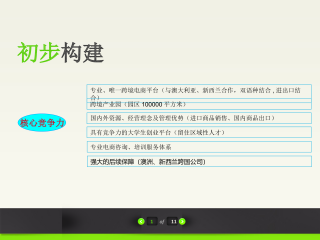
 2025-01-09 27
2025-01-09 27 -
跨境电商方案范文VIP免费
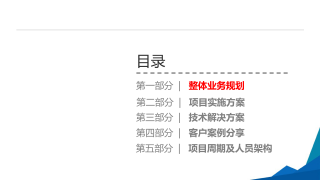
 2025-01-09 14
2025-01-09 14 -
创业计划书VIP免费
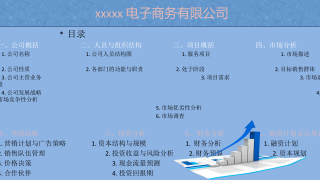
 2025-01-09 18
2025-01-09 18 -
xx生鲜APP计划书VIP免费

 2025-01-09 12
2025-01-09 12 -
跨境电商创业园商业计划书(盈利模式)VIP免费
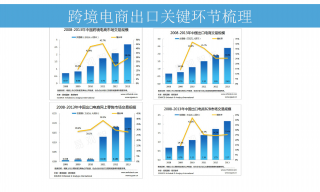
 2025-01-09 8
2025-01-09 8 -
跨境电商计划书VIP免费

 2025-01-09 13
2025-01-09 13 -
绿色食品电商平台项目计划书VIP免费

 2025-01-09 22
2025-01-09 22 -
农产品电子商务商业计划书VIP免费

 2025-01-09 9
2025-01-09 9 -
农村电商平台商业计划书VIP免费
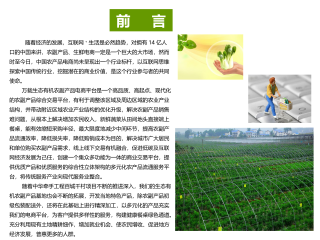
 2025-01-09 13
2025-01-09 13 -
生鲜商城平台商业计划书VIP免费
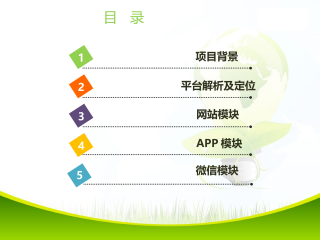
 2025-01-09 21
2025-01-09 21
作者:赵德峰
分类:高等教育资料
价格:15积分
属性:75 页
大小:2.04MB
格式:PDF
时间:2024-11-11


